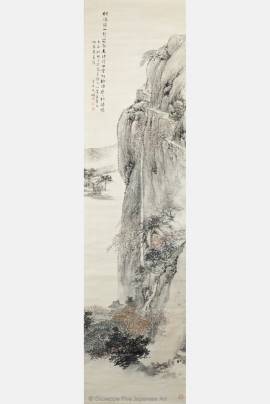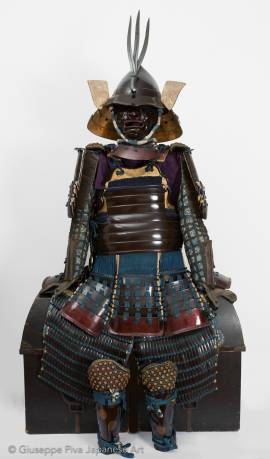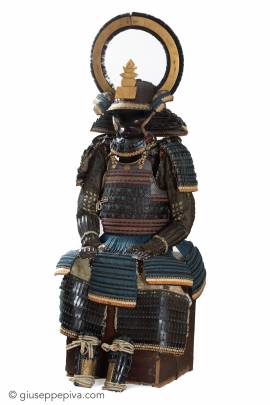Nanga waterfallOkuhara Seiko (1837-1913)Ink on silkPainting: 135.5 x 35 cmMounts: 188 x 58The hanging scroll shows a literati landscape in the nanga manner, with a long inscription and signed with three seals. The scene is dominated by a steep mountain, on which a waterfall is pouring. The style is quite naturalistic and impressionistic. The technique used by the artist to represent the climbing vegetation and splashing waterfall is small dark spots that create the illusion of depth and dynamism. Color inks are added to the black one and create red and bluish shades that underline...
WORKS FOR SALE
Nerikawa Tosei gusokuLeather samurai armor PERIODLate Edo period (1615-1868), 19th century This authentic samurai armor is entirely made of lacquered nerikawa(leather) except for the iron kote. Nerikawa has always been used when building samurai armor in order to diminish its weight, but it is only during the second half of the Edo period that we find full suits made only with this material. Even the helmet, a very nice momonari kabuto decorated with a slander maedate shaped as three bamboo leaves, is made with leather.Both sode are decorated with a large figure of a...
Tatakinuri Nimai-dō Tosei GusokuSamurai Armor in the style of Kuroda clanMid Edo period, 18th centuryKabuto signed: “Haruta Tokimune” This authentic samurai armor bears a kamon (family crest) representing a Chinese character. Even if it has not been possible to find the exact clan where the armor came from, a stylistic analysis suggests a strong connection with the Kuroda family, whose suits of armor have many features in common with the present one.The taste for large wakidate (side ornaments of the helmet) is the most evident feature. Even if the most famous...
Copyright © 2016 - giuseppe piva - VAT: 05104180962










